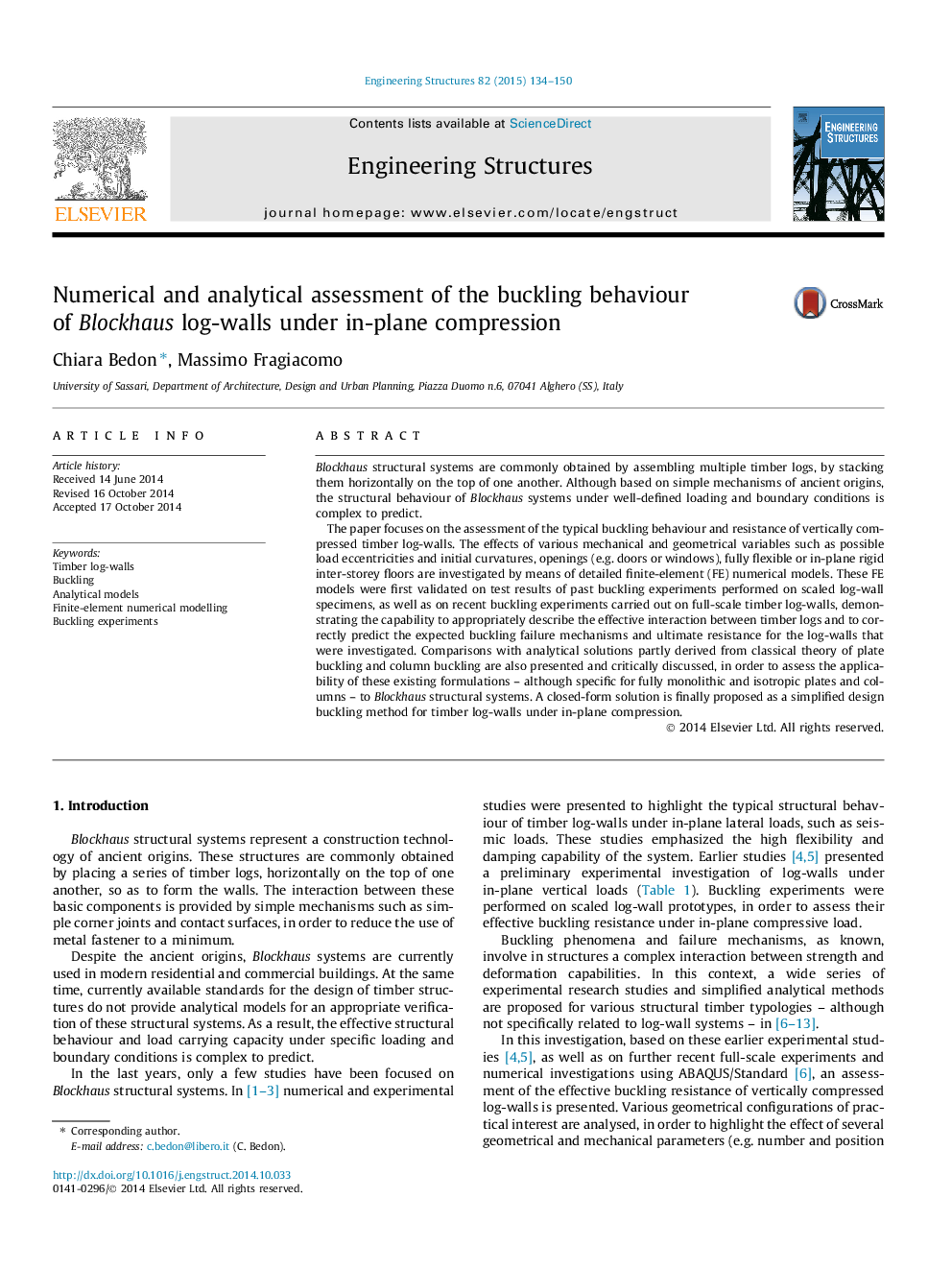| Article ID | Journal | Published Year | Pages | File Type |
|---|---|---|---|---|
| 6740651 | Engineering Structures | 2015 | 17 Pages |
Abstract
The paper focuses on the assessment of the typical buckling behaviour and resistance of vertically compressed timber log-walls. The effects of various mechanical and geometrical variables such as possible load eccentricities and initial curvatures, openings (e.g. doors or windows), fully flexible or in-plane rigid inter-storey floors are investigated by means of detailed finite-element (FE) numerical models. These FE models were first validated on test results of past buckling experiments performed on scaled log-wall specimens, as well as on recent buckling experiments carried out on full-scale timber log-walls, demonstrating the capability to appropriately describe the effective interaction between timber logs and to correctly predict the expected buckling failure mechanisms and ultimate resistance for the log-walls that were investigated. Comparisons with analytical solutions partly derived from classical theory of plate buckling and column buckling are also presented and critically discussed, in order to assess the applicability of these existing formulations - although specific for fully monolithic and isotropic plates and columns - to Blockhaus structural systems. A closed-form solution is finally proposed as a simplified design buckling method for timber log-walls under in-plane compression.
Related Topics
Physical Sciences and Engineering
Earth and Planetary Sciences
Geotechnical Engineering and Engineering Geology
Authors
Chiara Bedon, Massimo Fragiacomo,
